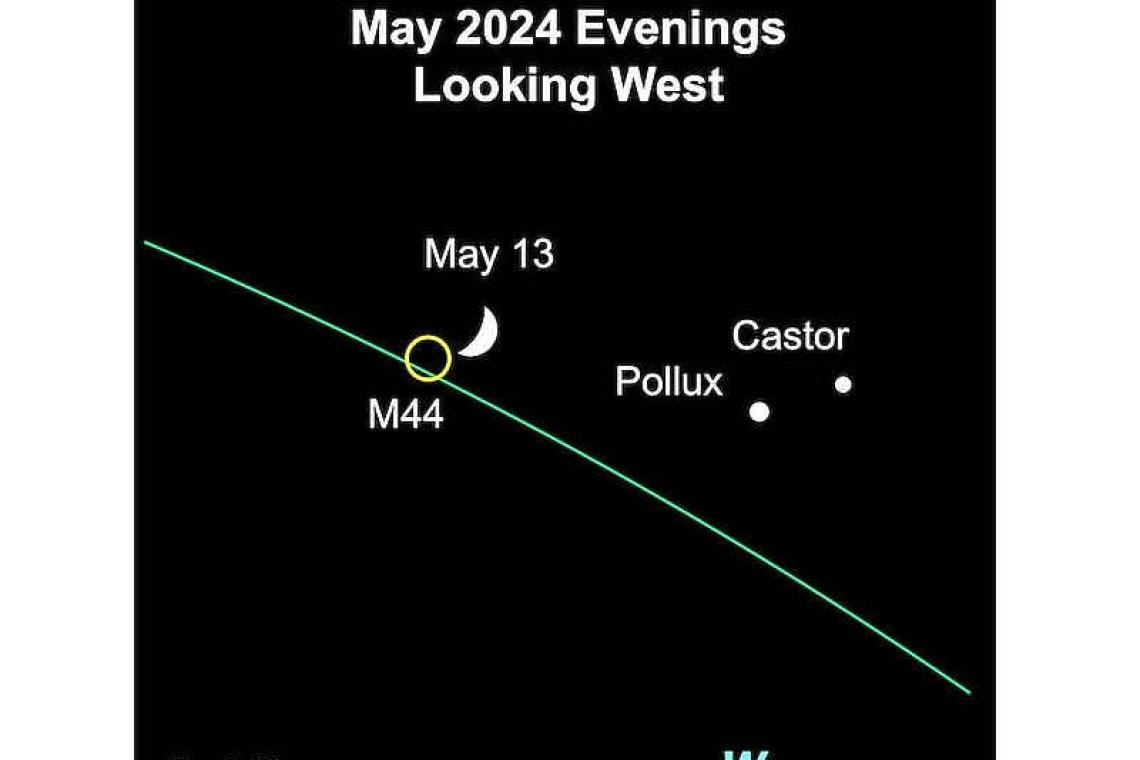~ St. Maarten’s Backyard Astronomy for May 10-12 ~
Sun rises at 5:40am
Sun sets at 6:36pm
Lunar phase: 1st quarter waxing crescent
Moon rises at 8:36 am
Moon sets at 10:28 pm
This weekend, you can possibly observe some “shooting stars”! It’s the Eta Aquarid Meteor Shower! Your best chance to see some meteors is to stay up late or get up early. Best viewing times are 1:00am until 5:00am. This is one of two meteor showers that is associated with the Comet Halley, the other one being the Orionids in the autumn months.
If you are up looking for shooting stars in the pre-dawn hours, look east to see Mars, Saturn and Mercury. Saturn is actually currently located in the constellation Aquarius, which you may have deduced is the namesake of the meteor shower – that is because the radiant point of the meteor shower is in the constellation Aquarius. A radiant point is simply the place in the sky that appears to be the “source” of the meteoric streaks. It isn’t necessary to know where the radiant point is to watch meteors, though, because they streak across the wide sky and all you have to do is look up! The Eta Aquarids will continue for another week or so, but they peaked earlier this week, offering up to 20 meteors per hour!
On the evening of May 10, you’ll see the thin and waxing crescent moon lying between two bright stars. The golden star is Capella in the constellation Auriga the Charioteer. And in vivid contrast to golden Capella is the bright red supergiant star Betelgeuse, the brightest star in Orion the Hunter.
Then, on Sunday evening, May 12, the still thin crescent moon will be located near the twin stars of the constellation Gemini: Pollux and Castor. Even though they are known as twin stars, they really don’t look alike. Pollux is a bit brighter and it’s a golden star, while Castor has a white light. They’ll rise before sunset and travel across the sky’s dome before setting near midnight.
By Monday evening, May 13, get your binoculars out and try to spot dozens of tiny stars in the Beehive Star Cluster, also known as M44. Look near those two twin stars of Gemini: Pollux and Castor. You can see them from darkness until just after midnight. The moon – by then a thick crescent – will lie near the Beehive Cluster, and may be a help and a hindrance: It can help you find the right area of the sky to search, but it may be a source of bright light that will wash out the tiny stars. Try anyway, and remember to keep zeroing in on that part of the sky with your binoculars on nights when the moon is not so bright!
Thank you for keeping up with the Night Sky articles, backyard astronomy designed for St. Maarten sky viewing. FYI: If you are out later on in the week, note that each star rises about four minutes earlier each day than written here, and the moon rises 50 minutes later. Night Sky is researched and compiled by Lisa Davis-Burnett. Earthsky.org is a key resource for information and images. Questions or comments? Email This email address is being protected from spambots. You need JavaScript enabled to view it.







